Award-winning images increase knowledge, awareness of rare species
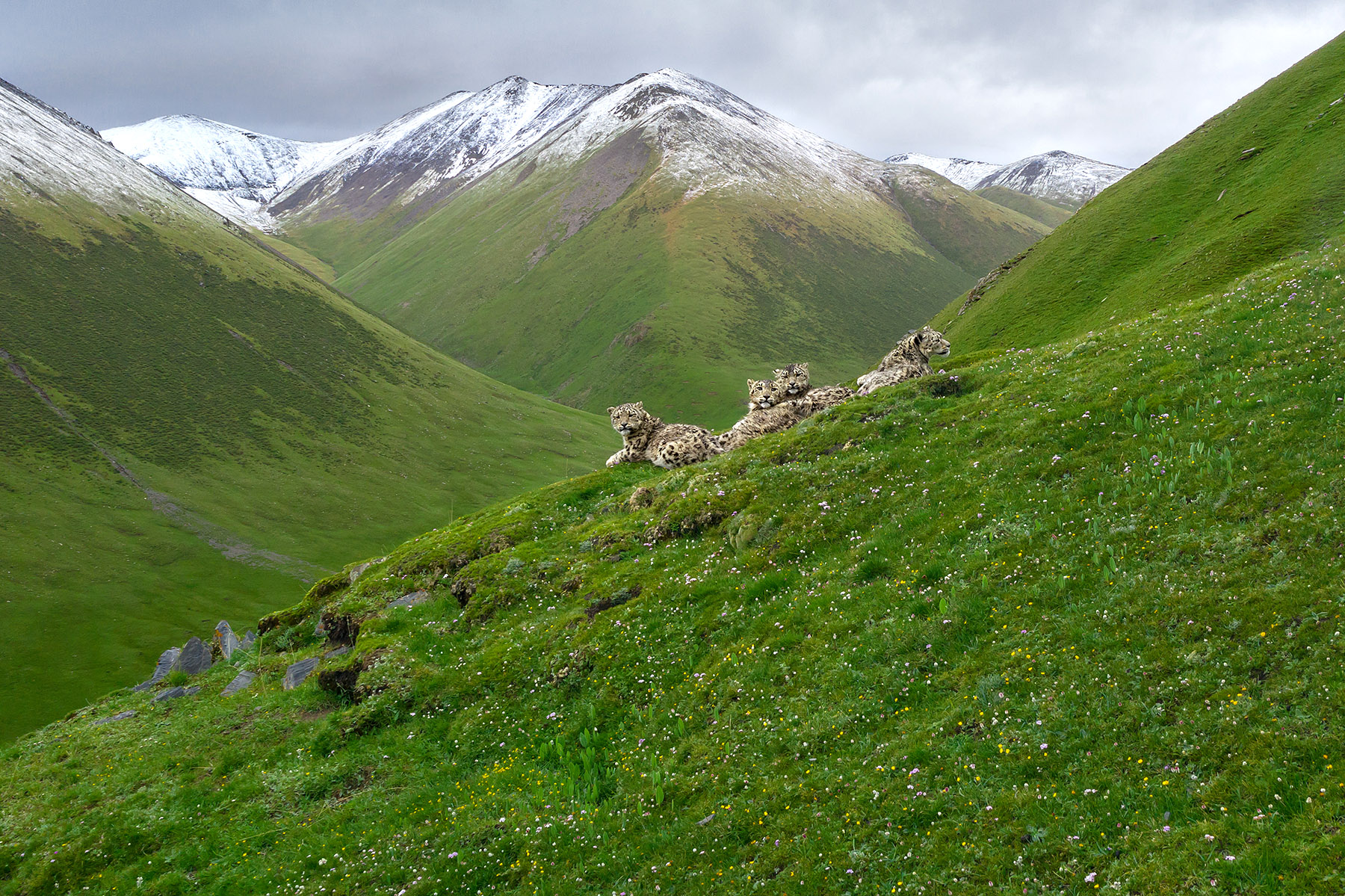
Since deciding to focus on capturing wildlife on the Qinghai-Tibet Plateau, particularly the elusive snow leopard, amateur photographer Luo Xiaoyun has evolved into the "best snow leopard photographer in the world" in just a few years.
The praise comes from China's most renowned wildlife photographer, Xi Zhinong. As a judge for the 2021 China Wildlife Image and Video Competition, Xi endorsed one of Luo's stunning snow leopard photos, which won in the competition's mammal category.
It was not the first time that the photographer had won awards for his photos of snow leopards, a species under first-class national protection in China and listed as vulnerable by the International Union for Conservation of Nature. During his debut at the Wildlife Photographer of the Year competition in 2021, two of Luo's photos clinched awards in the prestigious international wildlife photography event.
READ MORE: Protecting nature through photography
"The pictures provided a fresh portrait of the snow leopard and the dark and light of its mountain-top world," Rosamund Kidman Cox, who was editor of Wildlife Magazine (subsequently BBC Wildlife Magazine) for 24 years and has been a Wildlife Photographer of the Year judge since 1981, wrote on her foreword to Luo's photo album.
The album, published last year, has a collection of his excellent photos on wildlife on the Qinghai-Tibet Plateau, including more than 100 snow leopards. "Luo Xiaoyun, his superb photographs and new information about the life of snow leopards raise our knowledge about the species to a unique new and high level," wrote Luo's idol and renowned wildlife biologist and conservationist George Schaller.
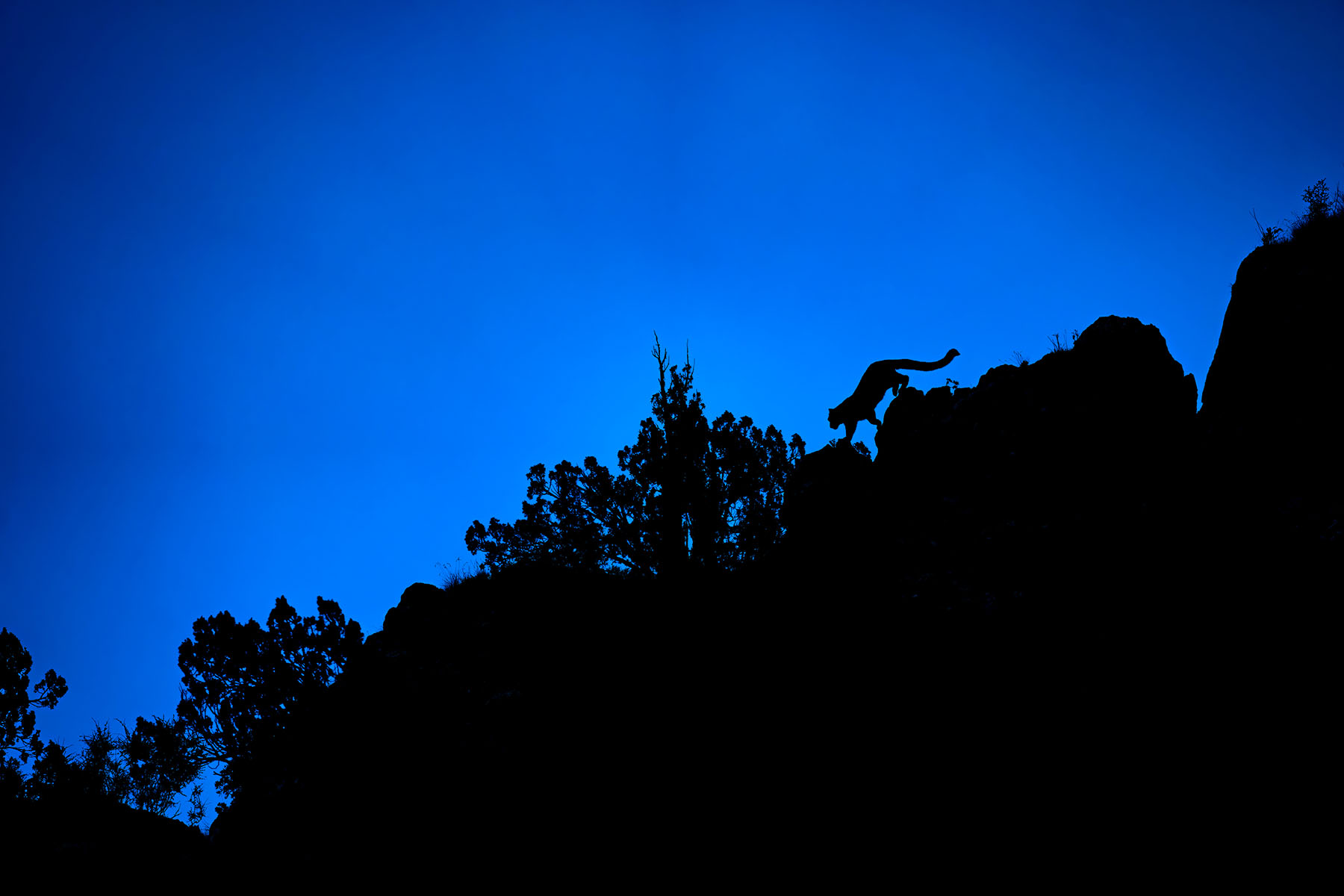
Early attempts
Born in 1964 in Chongqing, then a major city in Sichuan province, Luo studied at prestigious Tsinghua University in Beijing for eight years and was trained as an engineer and an enterprise manager. He founded his own company in Chengdu, capital of Sichuan, and has a successful career as an entrepreneur.
Prior to 2008, he enjoyed photography as a hobby. That year, a local newspaper reported that a monk in Shiqu county had captured a blurry video of a snow leopard using a home video camera. Experts confirmed it was the first video record of a wild snow leopard in China. Intrigued by the news, Luo's interest in the mammal was sparked.
Years later, after reading The Snow Leopard, a nonfiction book by Peter Matthiessen, an author from the United States, that recounts his journey with Schaller to find the elusive creature in the Himalayan region, Luo was captivated by the mystical animal and thought of searching for it in China.

In August 2017, Luo met Lyu Linglong, a photographer well-known for his captivating landscape photos in western Sichuan. Lyu mentioned his upcoming expedition to Shiqu in pursuit of snow leopards scheduled for the following year. Their encounter ignited a fervent resolve within Luo to accompany Lyu on his expedition. "To express my determination, I bought a new Toyota Landcruiser and lent it to Lyu for his use in Shiqu," Luo told China Daily. "The four-wheel drive has remained in Shiqu ever since and has already accompanied us on hundreds of trips. Its mileage has exceeded 350,000 kilometers."
In June 2018, Luo joined Lyu in Shiqu along with three Tibetan assistants. They ventured to a desolate mountain ridge at an altitude of 5,000 meters above sea level, where they set up camp. On the morning of their second day, two guides set out to search for snow leopards.
Half an hour later, the third guide, who stayed with Luo and Lyu, gestured to them that he had found something on the ridge they faced. "He couldn't speak Mandarin and we couldn't understand Tibetan," Luo said. "Searching the ridge through our cameras, we saw nothing."
It wasn't until Derin Drondrup, a Mandarin-speaking Tibetan guide, returned that they were informed that a snow leopard had appeared on the ridge about 150 meters from their position, but had walked to another side of the ridge. To catch a glimpse of the elusive animal, they would have to ascend further up the slope. By then, the snow leopard was long gone, probably disturbed by their presence. After spending six nights and seven days on the mountain, Luo failed to see the animal.
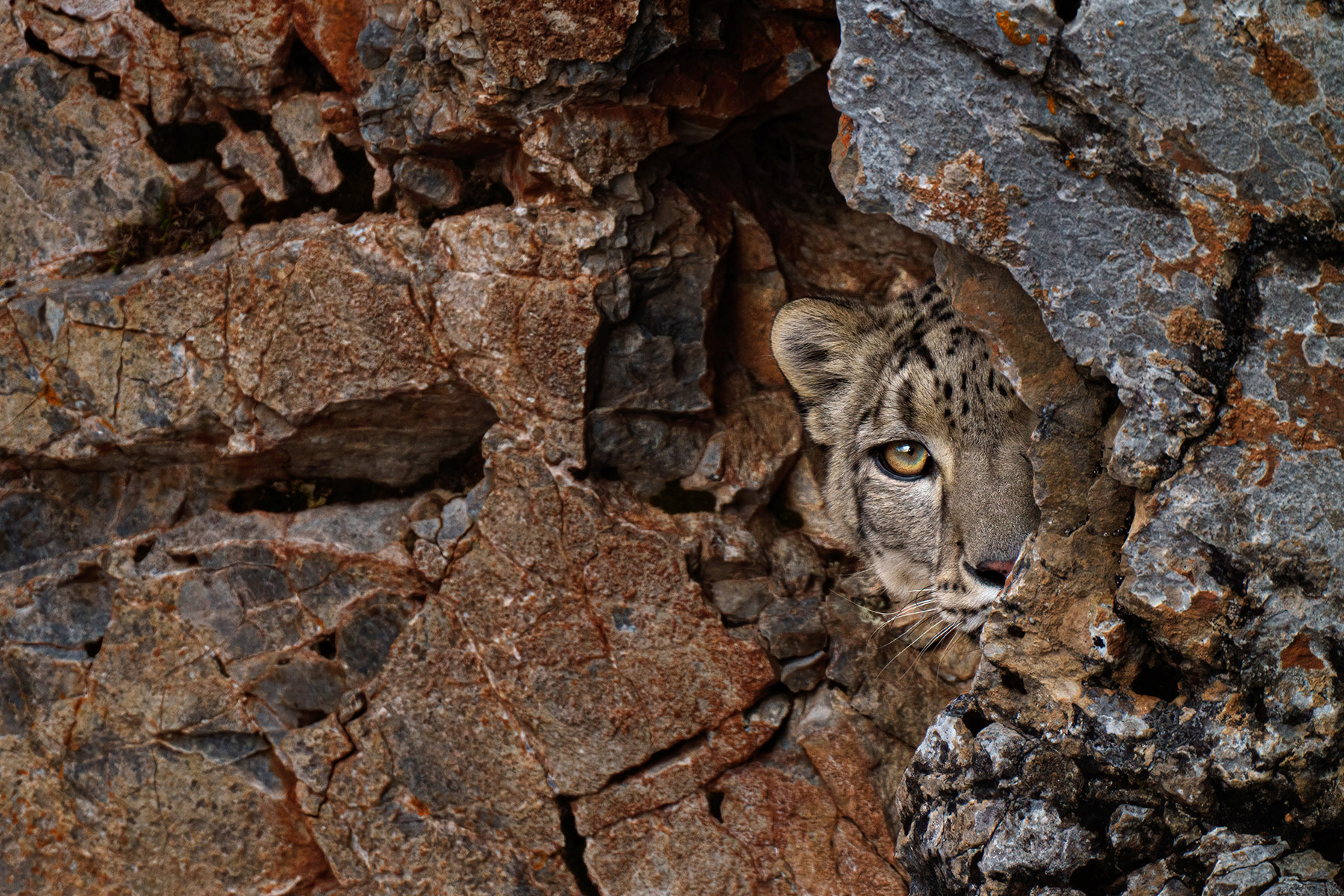
Undeterred, he returned to Shiqu in July, where he camped on the mountain and had his initial encounter with a snow leopard. "The cat was probably 600 meters from me, and I only had five seconds to snap some pictures," he said. "The sighting left me very excited."
In September, he succeeded in capturing the animals twice in Shiqu. "But the encounters were still distant and brief," he said.
He later came across a report detailing how a few people had the fortune of sighting five snow leopards on several occasions while birdwatching along a winding mountain road in Qinghai province. "I realized that the leopards might always be there but simply challenging to spot," Luo said. "The collective effort of more people actively searching with multiple sets of eyes heightened the likelihood of such sightings."
He decided to change his strategy.
"I concluded that the best way to find the animals was by hiring experienced guides with sharp eyes and searching for the leopards in a car," he said.
He was soon rewarded by the shift.
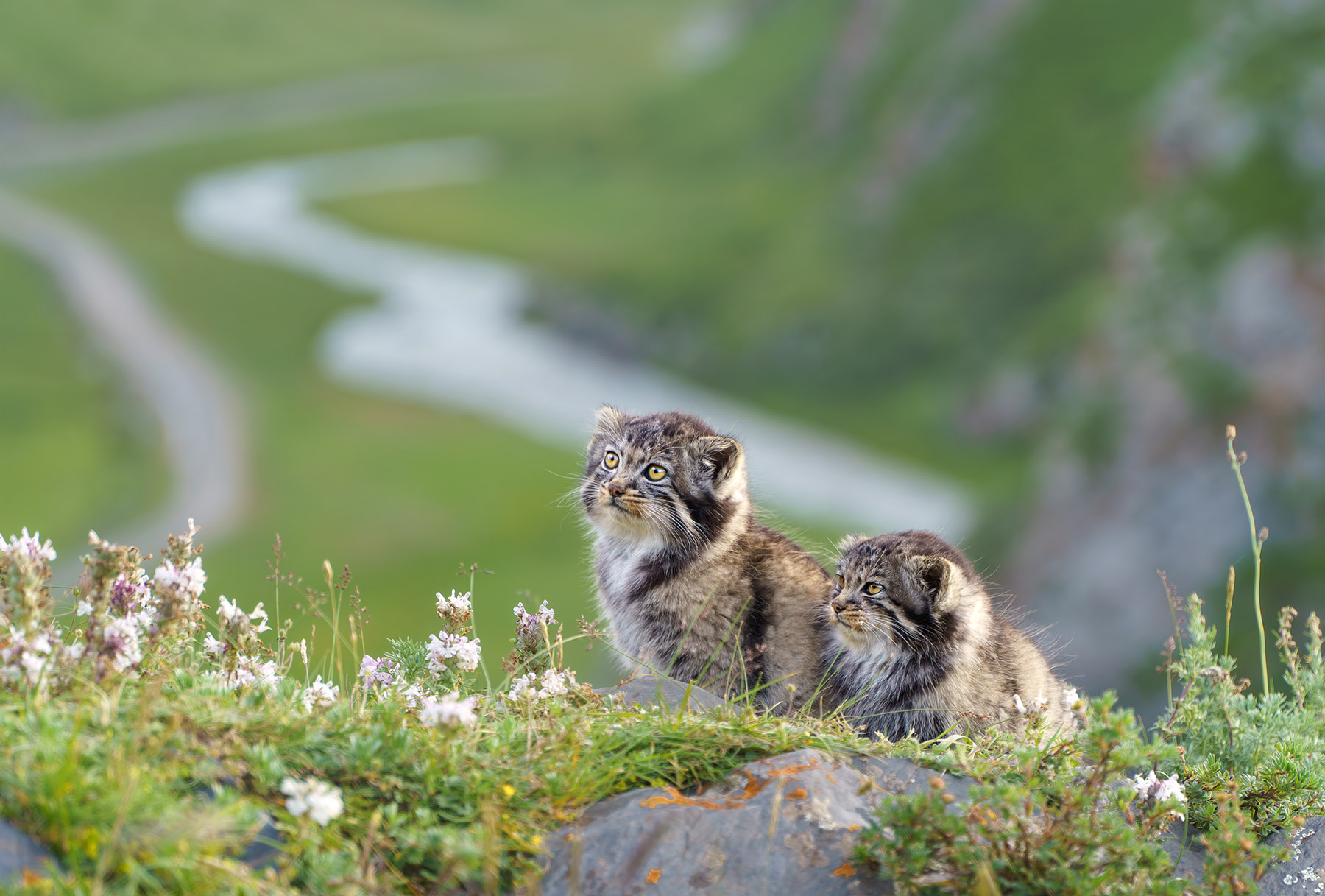
Award-winning photo
In May 2020, a Tibetan official from a township in Shiqu told Lyu that he had captured images of four snow leopards in an isolated valley, and Lyu relayed the news to Luo.
Luo went to Shiqu again. As the sighting happened just two days before his arrival, he believed that the leopards were still there and he committed to staying until he spotted them. Seven days passed with no sign of the majestic creatures, leading some disillusioned photographers to depart. Positioning themselves at the site of the recent sighting, they settled in for a patient wait.
While Luo rested in the car, his guide and driver, Nyima Drakpa, roused him with news of three snow leopards atop the mountain ridge. Luo captured footage of the leopards descending the ridge and later photographed the fourth leopard. "It was a thrilling breakthrough," he said.
Returning the next morning, they located the leopard family again. Using a drone to observe the animals from a distance, Luo found them feeding on a blue sheep on a slope. Opting not to disturb the leopards, he stationed himself a little further down the hill.
In the afternoon, the satiated leopards leisurely approached Luo's position, pausing on a slope 300 meters away to rest. Maneuvering his drone closer, Luo captured a striking image of the leopards relaxing on the verdant alpine meadow.
The photo, titled "Snow Leopard Summer", garnered a highly commended award in the Animals in their Environment category of the 2021 Wildlife Photographer of the Year in London.
Luo embarked on tracking the Drolma family — named after the family's female adult — ever since. His dedicated efforts have seen him visit the valley 35 times, typically spending a week per trip.
"After my first snow leopard sighting in 2018, I set a goal for myself to complete 99 'encounters' with them in the wild — that seemed unachievable at the time," he said. "Through years of effort, finding snow leopards has become much easier for me. The count of my encounters with them may well exceed 200, but I haven't counted for quite some time."
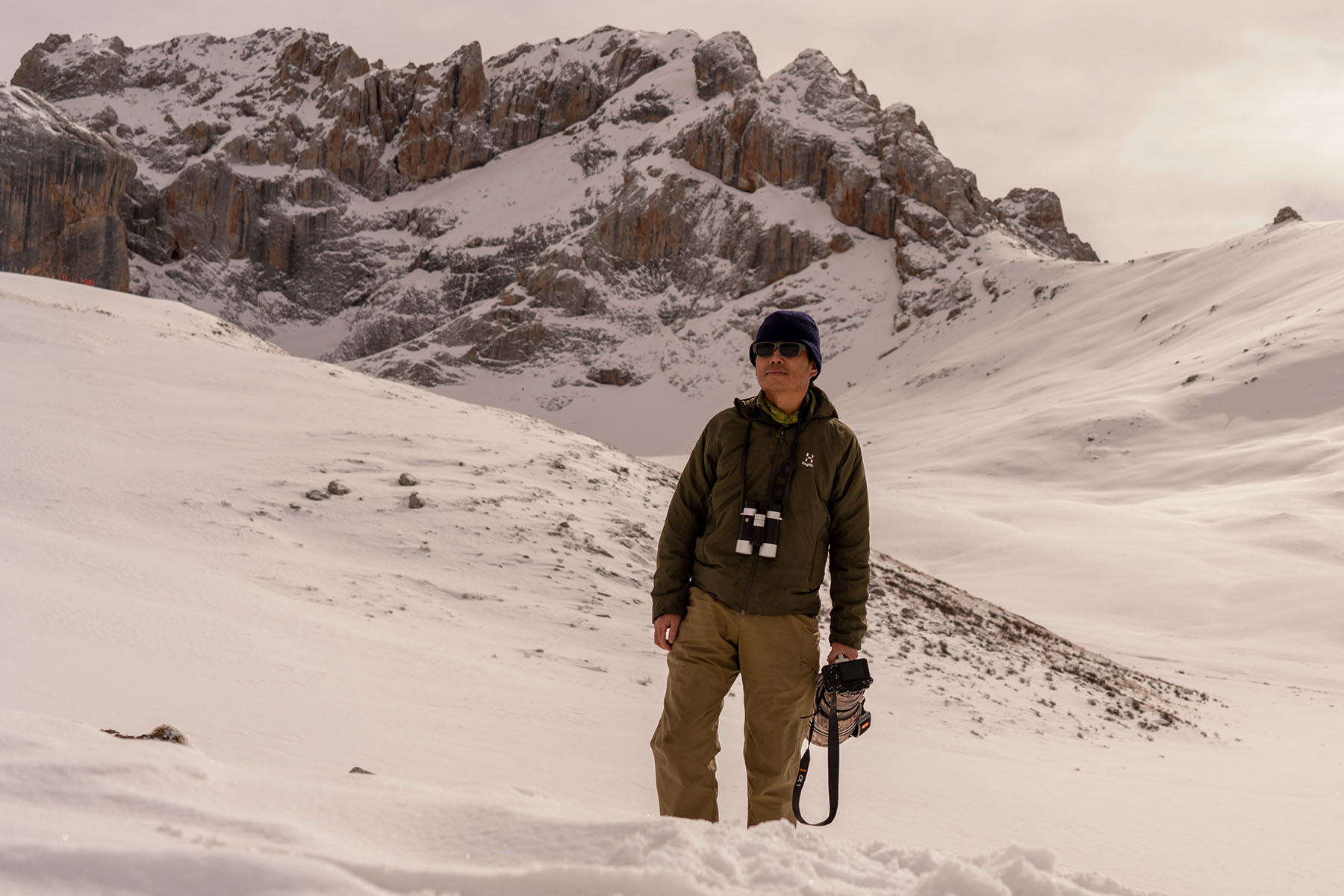
Documenting life cycle
Luo expressed his commitment to observing and documenting snow leopards. "We humans are still short of direct observations of enigmatic species like snow leopards," Luo said. "Many scientists' research on the animals have relied on indirect methods, such as infrared cameras. By witnessing and recording the complete life cycle of the Drolma family, I think that my efforts will be more meaningful."
ALSO READ: Cameras capture hidden lives of rare animals
He explained that a snow leopard's life cycle lasts 12 to 13 years in its natural habitat. Drolma, believed to have been born in 2015, mated with Dawa, an adult male, producing six offspring across three births. Remarkably, her eldest daughter, Lhamo, gave birth to three cubs in a single litter in June 2023. "I want to answer questions like when Dawa will lose his mating privileges and the maximum number of offspring that Drolma can potentially bear," he said.
After reading part of his field logbook, an editor from a nature magazine recommended it to a publishing house in Beijing, which plans to release it in the next month.
"I think it's not comprehensive," Luo said. "But they considered it sufficient as a periodic compilation of my fieldwork."


